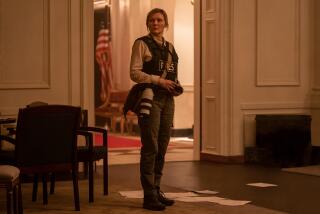BOOK REVIEW : A Vivid Collection of Untold War Stories : THE CIVIL WAR IN THE AMERICAN WEST, <i> by Alvin M. Josephy Jr.</i> , Knopf $27.50; 448 pages
- Share via
Exactly where and when did the Civil War come to an end?
Not with the surrender of Robert E. Lee at the Appomattox courthouse on May 23, 1865, as we were taught in school. The fact is that guerrilla warfare continued for another two months--and the last Confederate general to lay down his arms was a Cherokee chief named Watie Stand who surrendered his Indian regiments at a place called Doaksville in what is now Oklahoma.
We learn this odd and telling fact--and a thousand other secrets of the Civil War--from Alvin M. Josephy Jr. in “The Civil War in the American West,” a sweeping and often surprising account of the untold stories of the war between the states.
The West, as Josephy defines that mythic place, starts on the banks of the Mississippi and ends on the shores of the Pacific Ocean--a vast canvas on which Josephy paints a series of vivid historical tableaux featuring not only Yanks and Rebs but also cowboys and Indians, guerrilla fighters and outright terrorists, empire-builders and myth-makers, all of them rendered in true colors: blue and gray, to be sure, but also black, brown and red.
“Then, as now, (the West) was a land of ethnic and cultural pluralism, of stark contrasts and challenges that encouraged tension and combativeness,” Josephy writes. “The Western states themselves and their . . . diverse and growing populations have been denied a just measure of recognition of their own Civil War legacy.”
California, for example, figures in Josephy’s account in some surprising ways. Almost half of its population of 380,000 came from slave states, and “the countryside around Los Angeles and San Bernardino . . . was a particular hotbed of secessionist conspirators.” And it was only the election of Leland Stanford as governor that “put California firmly behind Lincoln and the cause of the Union.”
It’s clear that Josephy and his publisher are attuned to the renewed interest in the Civil War sparked by Ken Burns’ brilliant television documentary--indeed, Burns is quoted on the jacket--but the book is, thankfully, gimmick-free. Josephy honors and enriches the best traditions of lay scholarship by giving us solid historical research rendered in highly readable prose.
In that sense, Josephy’s book is rather old-fashioned--it’s full of names and places and dates, facts and figures, all stitched together with a vivid narrative thread. Somehow, the maps by cartographer George Colbert seem to embody the qualities of the prose itself: clear, precise and informative, but hardly ornate.
At the same time, however, Josephy does not overlook the storybook appeal of his subject, which amounts to a saga of political intrigue, imperial ambition and frontier warfare on a heroic scale. Abraham Lincoln and Jefferson Davis figure in his tale, but so do Brigham Young, Kit Carson, Buffalo Bill Cody, Quantrill and his “Raiders,” and dozens of less celebrated but no less colorful figures.
And Josephy pushes his book far beyond the reach of conventional Civil War historiography. He sets out to describe the experiences of “peoples who are customarily left out of the general histories of the Civil War,” and he allows us to understand that the vast mobilization of American arms and men during the Civil War was quickly turned against the native dwellers of the West.
The massacre of Indians may have begun in the heat of war, for example, but it did not end with the surrender of the South: “Freed by the defeat of the Confederacy,” Josephy points out, the armed forces of the United States “sought under Sherman, Sheridan, Custer and others to complete the conquest of those tribes that were still able to resist.”
“The Civil War in the American West” is not really a revisionist work--Josephy fills in the blanks of history, and he reminds us of hard realities that we may prefer to overlook. That’s why Josephy’s book deserves a readership far beyond the circle of Civil War buffs.
Next: Richard Eder reviews “Dear Departed” by Marguerite Yourcenar (Farrar, Straus & Giroux) .
More to Read
Sign up for our Book Club newsletter
Get the latest news, events and more from the Los Angeles Times Book Club, and help us get L.A. reading and talking.
You may occasionally receive promotional content from the Los Angeles Times.










